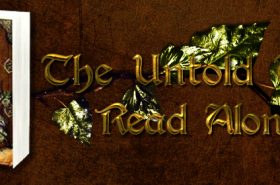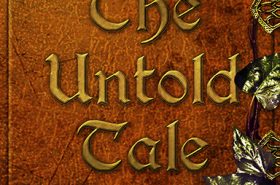I know I promised you the subgenres of Science Fiction this week, but unforeseen schedule constraints meant that I had to postpone it. Again. But don’t worry, that behemoth of a post will surface before this series is done. I promise. Today, though, we’re going to tackle what’s known as “uncategorized fiction” or “General Fiction.” (“Categorized Fiction” is used to describe genre fiction like Fantasy, Sci-fi, Romance, etc.)
General Fiction is that strange catch-all genre where titles no one really knows how to classify find themselves, and it typically takes up about half a bookstore’s inventory. But even though it’s kind of a vague term, there’s nothing general about it. In fact, my research has shown that there are actually 12 categories you’ll be guaranteed to find in this section. Notice I called them categories, not subgenres. General Fiction doesn’t really have subgenres. Each of these is considered its own thing and are umbrella-ed beneath the header of General Fiction solely so they can be shelved together in a bookstore. Curious what they are? Let’s have a look.
Literary Fiction
Ah, the most pretentious category of fiction. Admit it, a lot of you instantly pictured snooty English Majors in tweed jackets declaring themselves too good to write something as trashy as “commercial” genre fiction and actually, you know, make money. Don’t lie, now. I know I’m not the only one to harbor that opinion. 😉
But despite it’s bad rap, Literary Fiction does stand above other genres in terms of technical quality, garnering critical acclaim for its “serious” approach to literature. In fact, to even be considered part of this genre, a work has to meet a strict criteria of traits, including:
- Interesting, complicated characters who are often introverted and introspective.
- A Plot that focuses more on the inner-story of the character than external action, creating a complex and multi-layered emotional involvement between the reader and characters.
- Prose that is elegant, lyrical and layered. (It’s this emphasis on style that earns the genre its pretentious label.)
- A dark and serious tone that wrestles with universal themes and dilemmas.
- Slower pacing than more mainstream, commercial works.
A lot of those elements can and are included in other genres as well, (my own WIP is bordering dangerously close to qualifying), so there’s one other crucial piece that distinguishes a work as Literary Fiction — the audience. Unlike the other, “commercial” genres, who survive solely on the whims of fans, Literary Fiction targets critics. Its main reason for existing is to gain critical acclaim from other literary authors and reviewers, catapulting the author to stardom not by the number of books sold, but by how highly praised their work is. Which, I dare say, is even harder than finding success through book sales.
Drama
This category is more about tone than anything else. Like Literary Fiction, Drama is serious, but without the added emphasis on style. Technically, Drama is a term thrown around more in film and theater, but it exists in literature too. There’s only one requirement to be considered a Drama — it must be a story centered around the conflict or contrast of characters. Which, let’s face it, is 99% of what makes up most stories. That’s why the 5 Act Dramatic Structure originally created for plays — exposition, rising action, climax, falling action, denouement — became the basis of literature as well. Drama is a fundamental storytelling technique and it’s found in every genre, subgenre, or category.
So what makes a stand-alone Drama? I would say when the dramatic elements of the story overshadow those of another genre, it could be considered a Drama. For example, you’ve heard the term Crime Drama, I’m sure. In these (usually televised) stories, the drama surrounding the crime overshadows any other plotline, including character development. Family Drama, where the entire story centers on the conflict between the generations of characters, is another example. There are obviously shades of other genres in both of these, making pure Drama a rare creature. Therefore, it’s my opinion that while Drama is considered a category, it’s really a hybrid, combining its core principles with something else 9 times out of 10.
Humor
Humor is similar to Drama in that it is most often found as a hybrid, crossing-breeding with other genres in a symbiotic masterpiece. Unlike Drama, it’s much easier to identify. A humorous work has one goal — to provide amusement and make the reader laugh. That’s it. Really. If your main mission as a writer is to make people laugh, then regardless of whichever other genre you choose to add in, your book is considered part of the Humor category.
Realistic Fiction
I would hazard that the majority of books categorized by bookstores as General Fiction actually fall into this. Similar to Literary Fiction, Realistic Fiction has a set of guidelines for its identification, namely:
- A conflict or problem that could actually happen in the real world.
- A setting that actually exists or could actually exist.
- Characters that are fully realized, complicated individuals.
- A plot that centers on everyday problems and personal relationships readers could easily relate to their own lives.
This category is one of the few that transcends audience as well, crossing into all ages and backgrounds. The recent success of The Perks of Being a Wallflower by Stephen Chbosky being a prime example.
Satire
Satire is a cousin of Humor. In fact, it’s technically considered a type of humor, encompassing things like irony, sarcasm, and parody. But unlike Humor, whose goal is simply to entertain, Satire has more of a malicious edge. Its intent is to act as a social critic, drawing attention to problems and societal issues through wit. It always contains some kind of message, and because of its often sharply-edged delivery, is not everyone’s cup of tea. I wrote a post about that very thing a while back — Sarcasm; It’s Not for Everyone. Satire is no different.
Tragedy
Tragedy. One of the longest-standing storytelling devices. And why not? Sorrow is one of the most powerful emotions we can feel. And clearly, it sells. I’m pretty sure Nicholas Sparks figured out ages ago that his blending of Romance w/ Tragedy led to his legions of Kleenex-armed, female fans and his insanely prolific career. Hence the plethora of titles he’s released under that formula.
Similar to Drama, Tragedy is usually found as a hybrid with something else. Its most simple definition is that it describes the horrible events derived from the actions of the hero/heroine, whether that be self-destruction or calamity for those around them. A happy ending isn’t required in any category except Romance, but it’s definitely not going to appear here. If you pick up a tragedy, expect to bawl your eyes out and walk away feeling burdened. That emotional impact is what makes Tragedies some of the most remembered and powerful stories out there.
Tragicomedy
All subgenres can be combined to create a new one, but few deserve their own designation as stand-alone category, making Tragicomedy even stranger than its name implies. Clearly, it’s a combination of Tragedy and Humor, but oddly, there is no formal definition for it. The closest I found was that it’s a tragedy containing enough comedic elements to lighten the mood, or a serious story with a happy ending. If I understand it correctly, it’s meant to be a lighter form of tragedy, so rather than a reader walking away feeling depressed, they end feeling slightly uplifted in the way Lifetime movies are uplifting — feel-good endings with a heavy undertone. By that definition, I suppose books like Kate Jacobs’s The Friday Night Knitting Club & Comfort Food, as well as everything by Mr. Sparks could almost fall into this category?
I’m not at all familiar with this category, though, so if I got it wrong, someone please feel free to correct me. 🙂
Chick Lit (Women’s Fiction)
Speaking of Lifetime, this is the literary equivalent. A newer category that saw its popularity skyrocket in the late 1990’s, Chick Lit is aimed at the modern woman, addressing everything from career, to relationships (including family and friends), to shopping and red-soled, uber-expensive high heels. Though it usually contains elements of romance, it’s not actually considered part of the Romance genre. It’s light-hearted and fun; the literary equivalent to a Rom-Com with your girlfriends. And thanks to books like Candace Bushnell’s Sex and the City, Chick Lit has become a staple in the publishing industry, spawning dedicated imprints like Harlequin’s Red Dress Ink and flooding the market with sassy, confident heroines in expensive shoes.
Inspirational Fiction
This category actually earns its own shelf in some bookstores, but since its formal definition is vague at best, I’m lumping it in with General Fiction.
Inspirational Fiction has one goal — to inspire. It features characters overcoming adversity in inspiring and uplifting ways. It often draws heavily on religious belief systems and for many, has become synonymous with Christian Literature. But that’s not completely accurate. Yes, the majority of this category does pull from the ideals of Christianity, but that isn’t actually a requirement. All that’s required is that a work of Inspirational Fiction somehow address the idea of faith and impart a positive message that inspires.
Historical Fiction
Historical Fiction is easy to spot when you’re browsing the General Fiction aisles. These are books set in the past, featuring realistic, historical settings and maybe even figures from actual history. The main characters, however, are always fictitious. There are three requirements of Historical Fiction:
- The events need to be believable enough that they could have happened.
- It has to have authentic settings and characters, including behavior appropriate to the time period.
- It has to have an accurate timeline for events that matches the reality of the time period being portrayed.
The point here is to showcase the past in an enlightening way, helping readers understand customs and cultures that have vanished or painting significant historical events through different POV’s. When you start deviating from the path history took, you’re wandering into the realm of Historical Fantasy, a different creature altogether.
Classic Literature
I’ve always thought that books falling in this category deserved their own shelf, but for whatever reason, they’re usually just lumped into General Fiction. Possibly because the term “classic” is somewhat arbitrary. We’re all familiar with titles in this grouping, having been force-fed them throughout school. But how do we actually define what makes something classic? By looking for these markers:
- A Classic usually comes out of Literary Fiction, sporting some kind of stylistic achievement that’s earned renown for decades.
- It should be representative of the time period it was written in, but transcends time, becoming as relevant to current generations as those it was written for.
- It must contain some kind of universal appeal, touching on themes that resonate sometimes hundreds of years later.
The exact list of Classic Literature changes depending on who you talk to, but it’s pretty safe to assume that if you’ve heard of it and it isn’t popular in the grocery store checkout, it’s probably a classic.
Western Fiction
This is another category that usually has its own aisle. But I’m including it here because it doesn’t appear to have any subgenres. A Western is a Western is a Western, if you get my drift. I’m sure the plots have varying nuances, but the overarching style never does. A Western is a book set in the Wild West of usually America between the late 18th century and the late 19th. And yes, it features exactly what you’d expect — cowboys, Native Americans, covered wagons, and women in aprons with shotguns.
So there you have it — 12 categories of literature you’re probably going to find in the General Fiction section. Thank God for alphabetization, eh? Otherwise we’d never be able to find anything in this genre! Wandering the aisles of General Fiction is definitely a daunting task, but it’s also one of the most interesting because you never know exactly what you’ll find. It’s kind of like flipping through the channels of a TV, there are as many variations as there are titles, and occasionally, you may even come across one of those amazingly brilliant, strange gems that defies all classification. And that is exactly what General Fiction is all about.
As with my previous posts, if you feel I’ve miscategorized or misrepresented any of these subgenres, feel free to speak up! 😉
**Another post syndicated from Senior Editor Kisa Whipkey’s personal blog, Nightwolf’s Corner**




Ellie Carstens
Very informative 🙂